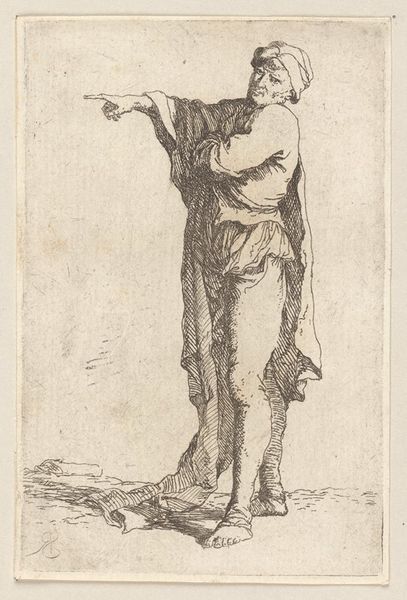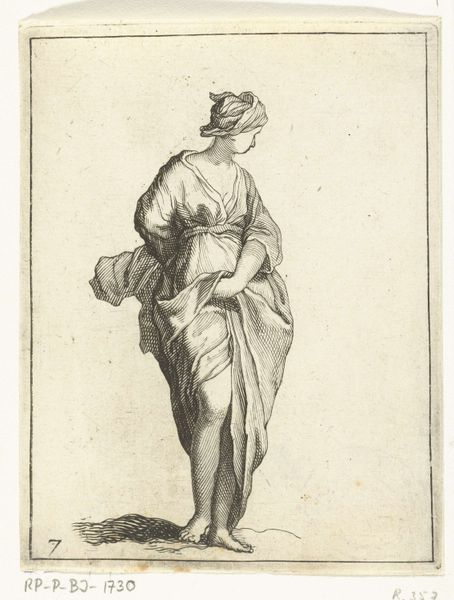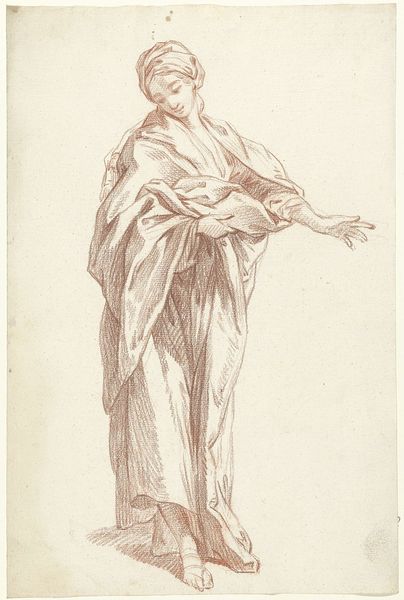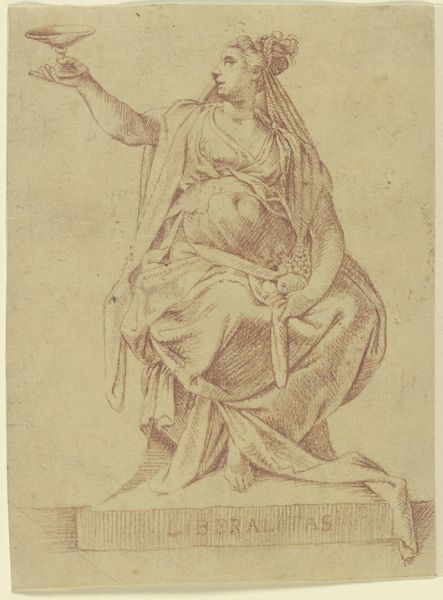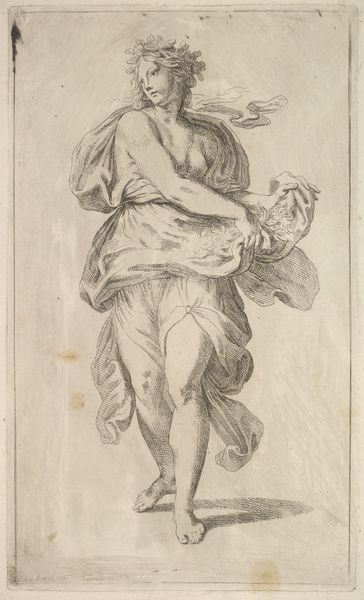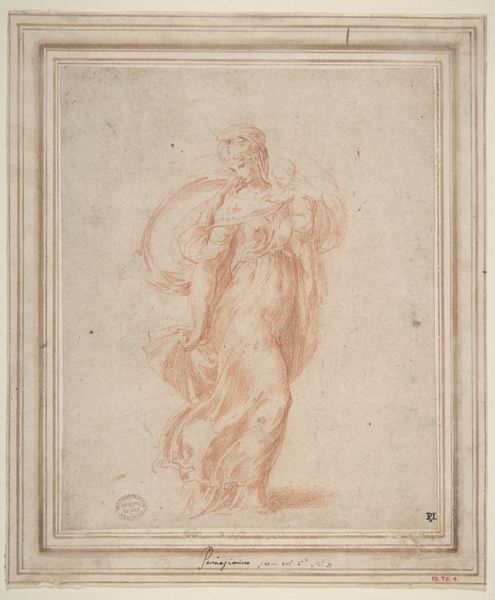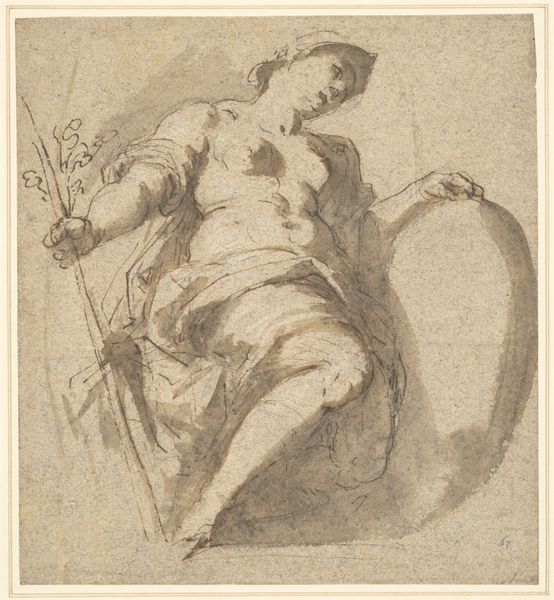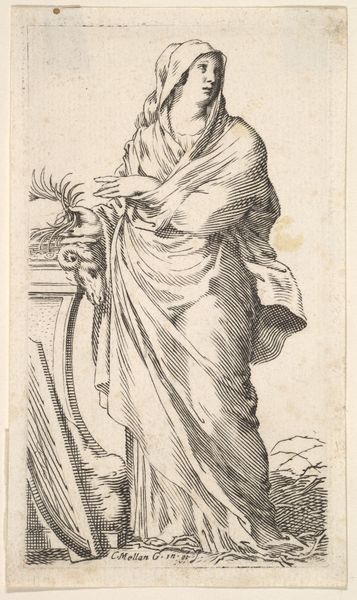
drawing, print, etching
#
portrait
#
drawing
#
ink drawing
#
allegory
# print
#
pen sketch
#
etching
#
figuration
#
academic-art
#
realism
Dimensions: height 228 mm, width 131 mm
Copyright: Rijks Museum: Open Domain
This print of the Personification of Modesty was made by C.A. Tuchs, likely in the late 17th century, using the intaglio process of etching. The etched lines create the figure, and the varying depth of the lines give the illusion of light, shadow, and three-dimensionality. Look at the way the lines are densely packed in the shadowed areas of her drapery, and how sparse the lines are on her face, creating delicate highlights. The process of etching requires immense skill and control over the materials. The artist would have coated a metal plate with wax, then carefully scratched an image into the wax, exposing the metal beneath. The plate was then submerged in acid, which bit into the exposed metal, creating grooves. This printmaking process was crucial to the development and dissemination of visual culture, allowing images to be reproduced and distributed widely. It democratized art, but also required skilled labor and material resources, reflecting the social and economic structures of its time. Ultimately, understanding the material and the making of this print helps us to see it not just as an image, but as a product of its historical moment.
Comments
No comments
Be the first to comment and join the conversation on the ultimate creative platform.
